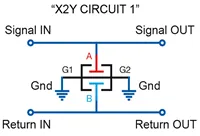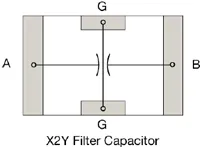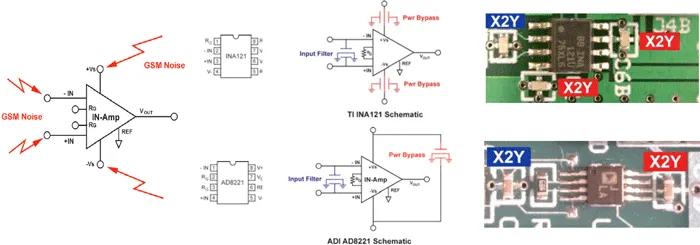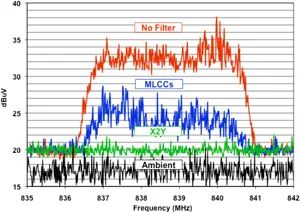GSM RFI Suppression with EMI Filters
Introduction
GSM handsets transmit in the 800/900MHz and 1800/1900MHz bands. Both bands employ a TDMA pulse repetition rate of 217Hz that is within the audible spectrum. This poses two serious problems in electronics. The first being the annoyingly familiar “brap-ap-ap-ap-ap” GSM buzz that can be heard in a wide range of audio products from headphones to concert hall PA systems. The second problem is “silent” signal errors created in instrumentation amplifiers. The ramifications of signal errors in medical, industrial process control, and security applications go beyond annoyance to critically serious issues.
This paper explains how to mitigate high frequency GSM interference by applying EMI capacitors and reviews test results demonstrating EMI's superior performance in high frequency RFI suppression.

Audio Applications
Audio amplifiers with diode junctions readily amplify rectified noise. Inadequate shielding and/or RFI suppression result in the annoying "buzz" heard from speakers of all types of audio products including headsets, hearing aids and even in cell phones themselves.
Audio amplifiers are vulnerable at the power feed, microphone / input, and speaker / headphone output cables. Since most products do not have a 360 degree shield-to-case bond and tightly sealed case, best performance results when the capacitor is located such that the G1 and G2 pins connect to the amplifier signal reference, (usually circuit common or the negative rail,) with the lowest inductance to the reference at the amplifier itself as possible. Signal leads should route to the capacitor A and B terminals, and then to the amplifier. In the case of power bypassing, the capacitor is shown with G1 & G2 terminals connected to the positive rail and A and B terminals connected to ground. This allows a small 0402 or 0603 EMI component to be oriented directly on top of a power trace (under G1 & G2) and then A and B terminals can be via connected to the ground plane.

HIT THE GROUND RUNNING (EMI Connection Options)
EMI capacitors require a low inductance, dual ground connection as seen in “Circuit 1.” Chassis or system ground is preferred, but if unavailable, an isolated or “floating” ground may be used very effectively. Because the filtered noise currents are small, adding a copper flood layer in the PCB and connecting it with vias to G1 & G2 create an image plane. Circuit 3 may be used in applications where a signal line is common with system ground. Comparative radiated emissions testing shows nearly the same level of effectiveness.



Instrument Amplifiers
High frequency GSM noise readily couples to signal and power traces in amplifier circuitry. To prevent GSM noise induced errors in medical and other sensitive measurement equipment, it is important to place adequate RFI protection at all amplifier pins. Two examples for connecting EMI capacitors to instrumentation amplifiers are shown below. The common connection method for an EMI cap at the amplifier input connects the A&B terminations to the +/- IN pins. The G1/G2 side terminations are attached to the reference/ground using at least one via for each side termination. Pinouts for the +/- power rails in these two amplifiers differ, as does the EMI power bypass circuit used. For power bypass, either the A/B or G1/G2 terminal pairs may serve as the GND/ref connection to satisfy various PCB layout requirements.

GSM Test Results
A controlled test was conducted where an 840MHz GSM handset signal was delivered to the inputs of three different amplifier test circuit configurations:
- Unfiltered input, 100nF MLC power bypass
- 2 X 1nF MLC input filter, 100nF MLC power bypass
- 1 X 1nF EMI input filter, 100nF EMI power bypass
The three test circuit outputs were then compared on a high frequency spectrum analyzer. The results show the EMI configuration provided a nearly flat response above the ambient and up to 10 dB better rejection than the conventional MLCC configuration. Further test details including a GSM audio demonstration can be seen in Texas Instrument's Analog eLab Videocast – Cell Phone GSM Interference available at the following link:
Texas Instrument's Analog eLab Videocast – Cell Phone GSM Interference
EMI Design Assistance Available
We encourage you to involve us early in your design / evaluation of EMI technology.For further information please see
"EMI Filter Evaluation and PCB Design Guidelines"available at
X2Y filter decoupling capacitors